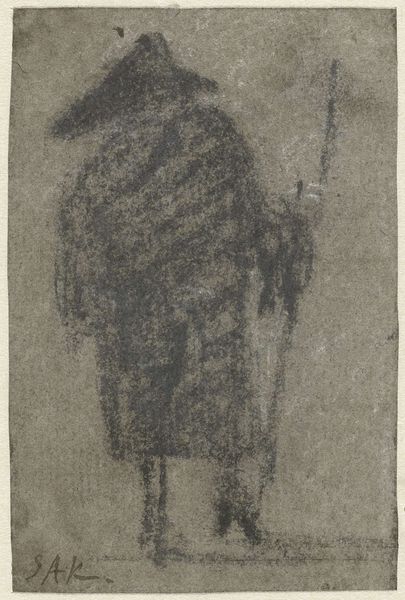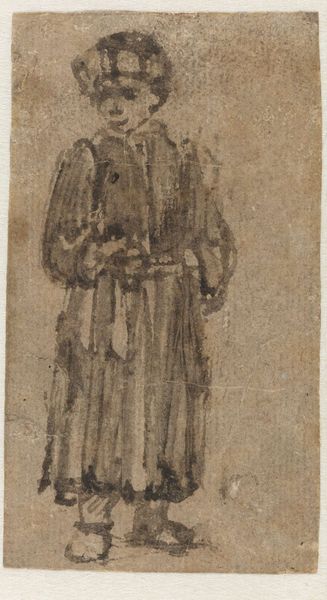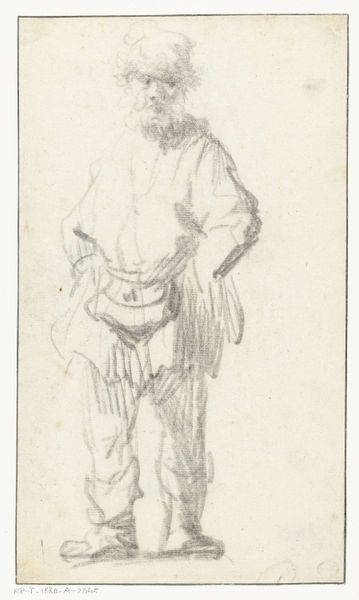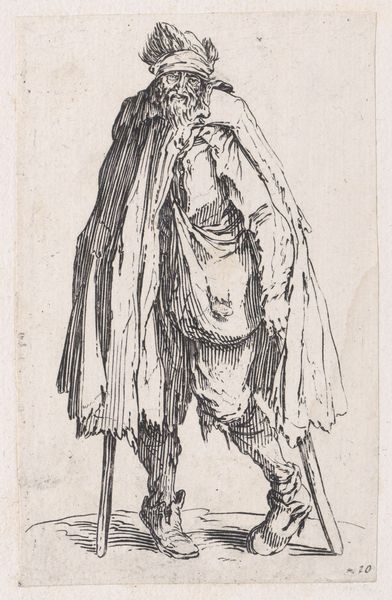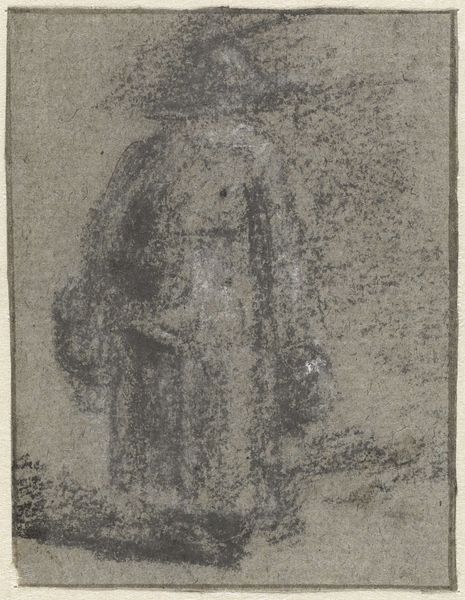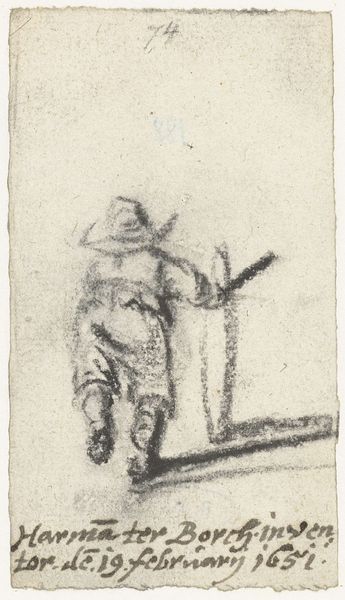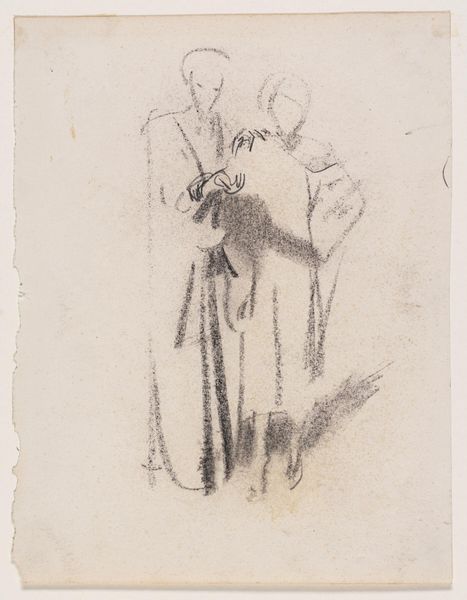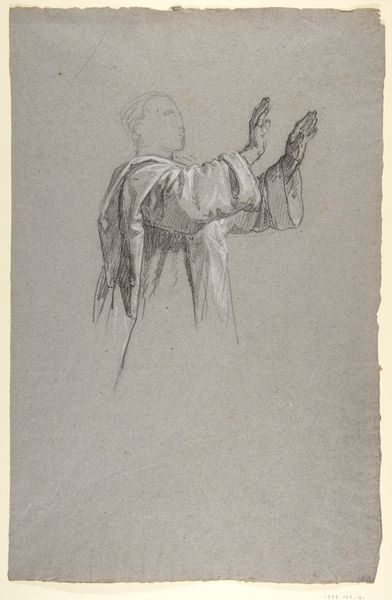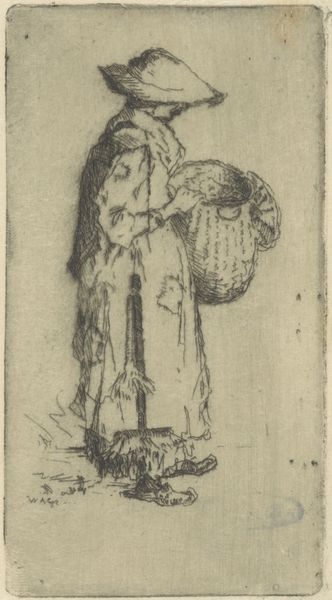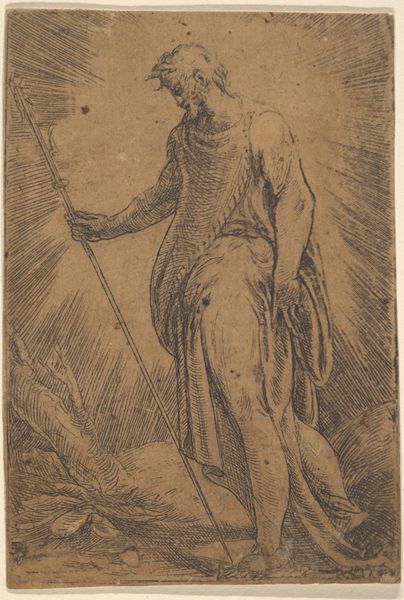
drawing, pencil
#
portrait
#
drawing
#
amateur sketch
#
toned paper
#
light pencil work
#
pencil sketch
#
incomplete sketchy
#
figuration
#
personal sketchbook
#
ink drawing experimentation
#
pen-ink sketch
#
pencil
#
sketchbook drawing
#
genre-painting
#
sketchbook art
Dimensions: height 135 mm, width 87 mm
Copyright: Rijks Museum: Open Domain
Editor: This drawing, titled "Karikatuur van een man met een kromme rug, op de rug gezien"—"Caricature of a man with a crooked back, seen from the back"—dates from 1770 to 1825, and is by Simon Andreas Krausz. It's a pencil sketch on toned paper, and there's something almost melancholic about the figure's posture, wouldn't you say? What do you see in this piece, considering the time it was made? Curator: The sketch certainly possesses a quiet pathos. During this period, the Enlightenment's emphasis on reason and ideal forms began to wane, giving way to Romanticism's interest in individual experience and emotion. Caricatures, previously used for simple ridicule, started reflecting deeper social anxieties. Editor: So, this could be more than just a funny drawing of a hunched-over man? Curator: Exactly. Think about the social position of someone with a physical deformity. What kind of roles would they have occupied? The hunchback figure has a long and complex history in art and literature. Is he a marginalized figure, a wise fool, or something else entirely? This work could comment on social exclusion. Editor: That makes me see it differently. The simple lines might mask a more complex social commentary. Were Krausz’s works usually charged with social meaning? Curator: While he might not have been overtly political, the act of depicting this figure at all suggests an awareness of social hierarchy. The artist may have seen, in this man, an archetype of suffering, an embodiment of human frailty in a rapidly changing world. Remember, the late 18th and early 19th centuries saw immense social and political upheaval. Editor: I see, it's like Krausz is capturing a certain vulnerability that maybe reflects larger societal changes. Curator: Precisely. This little sketch might seem like just a quick study, but through understanding historical context, it actually offers insight into the artist's social awareness. Editor: That's fascinating. I never would have considered the social implications without understanding the time period and common societal perception. Thank you!
Comments
No comments
Be the first to comment and join the conversation on the ultimate creative platform.
